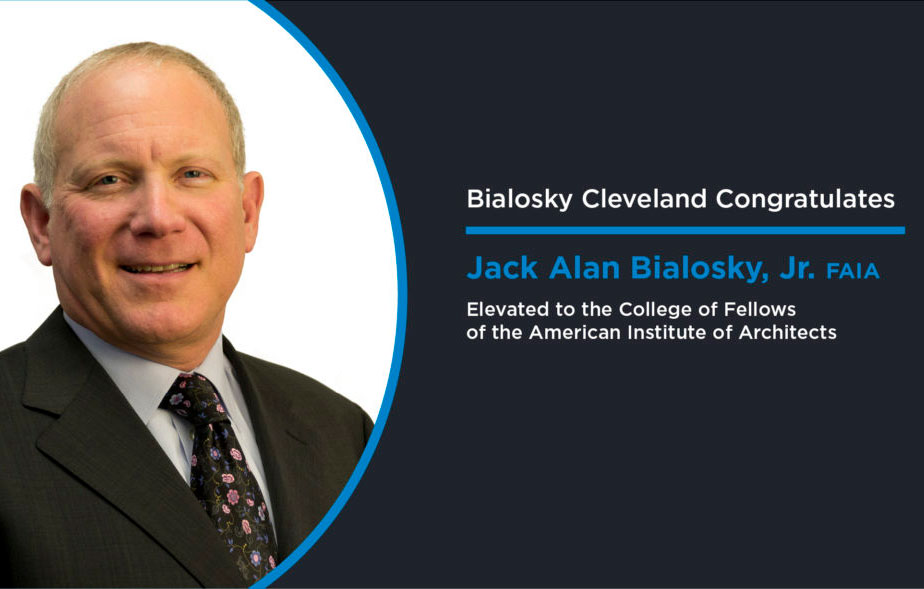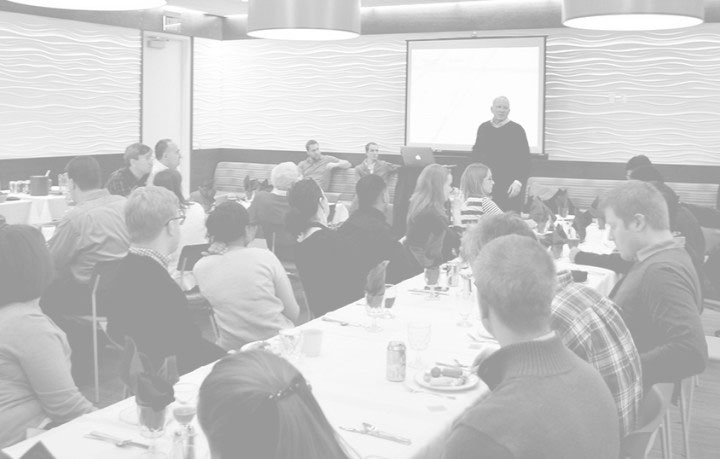Bialosky Cleveland congratulates Senior and Managing Principal, Jack Alan Bialosky Jr., FAIA, IIDA, LEED AP who has been elevated to the American Institute of Architects’ distinguished College of Fellows, an honor awarded to members who have made significant contributions to the profession and society. Jack will be honored at an investiture ceremony at the AIA Conference on Architecture 2017 in Orlando, FL.
The Fellowship program was developed to elevate those architects who have made a significant contribution to architecture and society and who have achieved a standard of excellence in the profession. Election to fellowship not only recognizes the achievements of architects as individuals, but also their significant contribution to architecture and society on a national level. Out of a total AIA membership of over 90,000, approximately 3 percent are distinguished with the honor of fellowship and honorary fellowship. The elevation to fellowship is conferred on architects with at least 10 years of membership in the AIA in one or more nomination categories; Jack was recognized for advancing Practice at a national scale.
After graduating Yale University and working and teaching in Boston, Jack returned to Cleveland in 1986 to begin stewardship of Bialosky Cleveland, who is known for the quality of its designs, the trust of their clients, the longevity of its staff, and the diversity of its portfolio. In 2009, the firm was recognized by the American Institute of Architects as a Gold Medal Firm, the highest honor awarded by its peers, in recognition of great depth and breadth, a collaborative environment, and having a cumulative effect on the profession over a substantial period of time. His leadership of the firm has extended to the planning and design of corporate campuses for Progressive Insurance which established a national architectural brand and helped propel the company’s explosive growth. At Crocker Park, in Westlake, Ohio, Jack has led the efforts to build a downtown heart for a city that challenged the notion of “urban living” being exclusive to metropolises, and serves as a national model of vertically integrated mixed-use.
Throughout his career, Jack has earned widespread respect as a trusted community leader and facilitator, helping to found non-profits, such as The Gathering Place, a cancer support agency, and to save others, such as The Children’s Museum of Cleveland, through strategic planning and design. Jack has served under four successive mayors as a key leader and primary architectural voice on behalf of the city, shaping major development for commercial, institutional and civic projects. Presently, Jack is the Chair of the Downtown Cleveland Design Review.
About The American Institute of Architects
Founded in 1857, members of the American Institute of Architects consistently work to create more valuable, healthy, secure, and sustainable buildings, neighborhoods, and communities. Through nearly 300 state and local chapters, the AIA advocates for public policies that promote economic vitality and public wellbeing. Members adhere to a code of ethics and conduct to ensure the highest professional standards. The AIA provides members with tools and resources to assist them in their careers and business as well as engaging civic and government leaders, and the public to find solutions to pressing issues facing our communities, institutions, nation and world.







